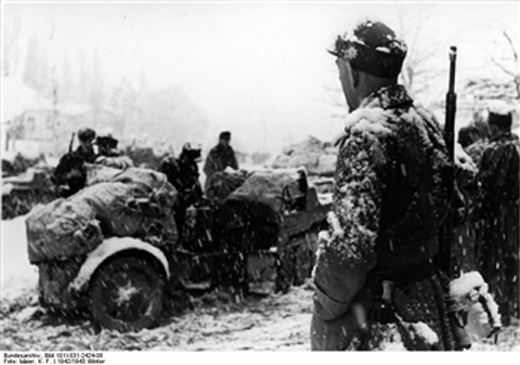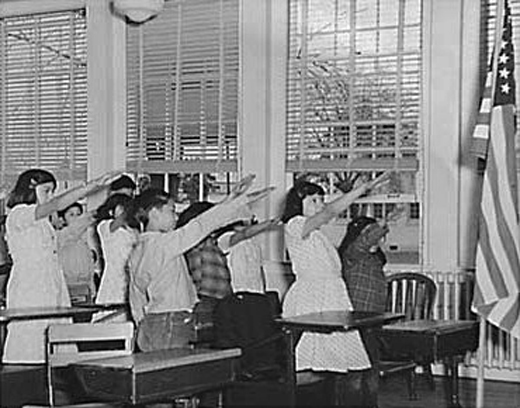Air Operations, Bismarcks
- 43rd Heavy Bomb Group B-17s attack a ship at Arawe.
- 1 90th Heavy Bomb Group B-24 attacks a transport off Gasmata.
Air Operations, CBI
BURMA- 22nd Medium Bomb Squadron B-25s attack Lashio.
Air Operations, Central Pacific
During the night, 26 B-24s of the VII Bomber Commandís 307th Heavy Bomb Group stage through Midway from Hickam Field, Oahu to attack Wake Island with 135 500-pound bombs and 21 incendiary bombs.
Air Operations, Europe
BOMBER COMMANDDaylight Ops:
- 6 Wellingtons are sent on cloud-cover raids to Emden; 4 aircraft bomb the estimated location through the clouds. 6 Mosquitos make attacks on rail communications in Belgium, Holland, northwest Germany; 2 planes hit railway target.
- 1 Mosquito is lost.
- 4 Oboe Mosquitos are sent to Hamborn and Rheinhausen; there are 4 OTU sorties; and there are no losses.
Air Operations, New Guinea
V Bomber Command B-25s attack Japanese Army ground troops near Buna.
[Air Operations, Tunisia
- Bad weather prevents XII Bomber Command B-17s from attacking Bizerte or secondary targets at Sfax and Sousse and only 2 93rd Heavy Bomb Group B-24s penetrate bad weather to bomb at Sousse. Several of those aborting manage to attack Monastir and railway facilities at Mahdia.
- 2 Luftwaffe medium bombers are downed during a midday mission by 33rd Fighter Group P-40 pilots.
Britain, Home Front
It is announced that the Roll of Honor of British war dead is to be deposited in Westminster Abbey, London.
[Burma
Gen W. L. Lloyd orders his 47th Bde to advance down both sides of Mayu Peninsula while the 123rd Bde is to send the bulk of his force toward Rathedaung. A small detachment is to move farther inland in the direction of Kyauktaw. These dispositions are less than ideal because of the dispersion they bring about.
[Eastern Front
The Soviet advances are very rapid and they retake several towns, including Morozovsk, Nilolkoe and Fydorovka. Recognizing that his Army Group B may be cut off from the rest of the German army if the Russians defeat von Manstein on the Don front, von Kleist begins the withdrawal from his most advanced positions in the Caucasus, where the Russians, 6 armies strong and completely reorganized, are attacking vigorously southeast of Nalchik. They are gaining ground on the Don front, and at any moment may surround not only von Paulus' 6th Army but also the whole of von Manstein's Don Army Group in the Stalingrad sector. In the central sector the Russians launch a powerful attack towards Velikiye Luki.
SOUTHERN SECTORLeading units of the XVII Tank Corps closes upon Millerovo while elements of the 1st Guards Army encircle Chertkovo, isolating 10,000 Axis troops. The Germans try to break out over the next few days while the 19th Panzer Divisin launches an unsuccessful relief attempt.
The XLVIII Panzer Corps is forced to pull back from the Chir in order to cover the rear of Group Hollidt, the Tatskinskaya airbase and the northern approaches to Rostov. As the Germans fall back the XXIV Tank Corps closes upon Tatskinskaya.
Retreat of Army Group A from the Caucasus |
 |
Hoth launches a final attack toward 6th Army. Bitter fighting rages as the 2nd Guards throw in its armor to halt the German thrust. Following this last effort Hoth had shot his bolt, his force being exhausted and at the mercy of the stonger Soviet forces opposing it.
[New Guinea
Gen Oda takes over direct command of Japanese operations on the Sanananda front. Australian reinforcements (21st Brigade headquarters and the 39th Battalion of he 30th Brigade) reach Soputa from Gona and relieve the US 126th Infantry forces of the roadblock on the Soputa-Sanananda trail. The Australian 21st Brigade takes command of the 49th Battalion, 2/7th Cavalry, and US forces from the roadblock. The 30th Brigade, which is responsible for clearing pockets at the track junction, retains command of the 36th and the 55/53rd Battalions and the rest of the US forces on this front. Firm opposition of seasoned Japanese troops limits efforts to advance north along the track and to clear the track junction.
On the Urbana front, Company I of the 127th Infantry follows Company K across Entrance Creek, strengthening the bridgehead. Other elements of the 127th Infantry begin to clear Musita Island after engineers repair the bridge to it.
On the Warren front, the Australian 2/10th Battalion (less C Company) continues to cross Simemi Creek near Old Strip, while the 2/9th plus C Company of 2/10th mops up east of the creek.
[North Africa
TUNISIADuring the night the British V Corps of 1st Army reopens the offensive with an attack just north of Medjez el Bab. The fiercest fighting centers around Djebel El Ahmera, later known as Longstop Hill. There is very heavy rain which does much to hinder the attack. The 2nd Coldstream Guards, 1st Guards Brigade, do, however, attack and partly occupy Djebel el Ahmera, 6 miles northeast of Medjez el Bab.
[ Proper Way the Salute the Flag |
 |
Pacific
The US submarine Greenling (SS-213), attacking a Japanese convoy, sinks Patrol Boat No. 35 about 70 miles north-northeast of Kieta, Bougainville.
[